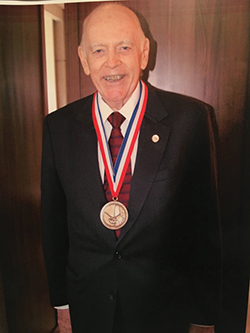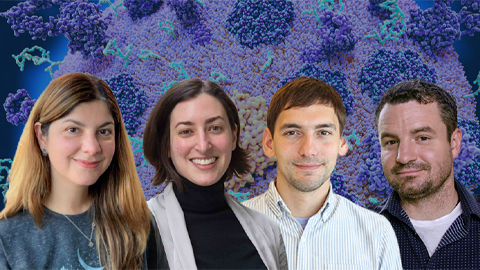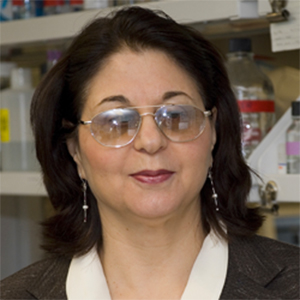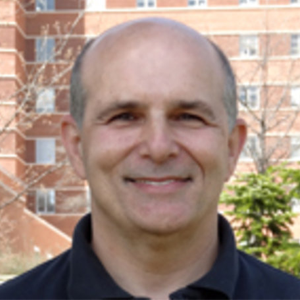Roscoe Brady (1923 – 2016)
It is with sadness, honor and deep respect that we note the passing of Roscoe Owen Brady, a pioneer in biomedical research, on June 13. He was a world-renowned scientist whose efforts have benefited many patients suffering from inherited disorders of lipid metabolism. Brady’s early scientific work helped form the basis of the biochemistry of fatty acid, lipid and sphingolipid metabolism. As a quintessential physician-scientist, he expanded this research into the biomedical arena and developed diagnostic tools for patients and carriers as well as treatments for a devastating class of lysosomal storage diseases known as the sphingolipidoses. These are severe, often fatal, disorders caused by genetic defects in lysosomal sphingolipid catabolism. His pioneering therapy still is being used clinically today, and the approach now has been extended for the treatment of several other lysosomal storage diseases.
 Roscoe Brady
Roscoe Brady
Brady’s more than six decades of work was admired widely throughout the world as evidenced by the numerous honors he received, including the Lasker Award, the National Medal of Technology and Innovation from President George W. Bush, and membership in both the U.S. National Academy of Sciences and the National Academy of Medicine.
Born in Philadelphia in 1923, Brady received his bachelor’s degree from Pennsylvania State University and his M.D. from Harvard Medical School in 1947. He then returned to Philadelphia, where he interned at the University of Pennsylvania Hospital. Over the next four years at the University of Pennsylvania School of Medicine, he was a fellow in the department of medicine and a postdoctoral fellow in the department of physiological chemistry, where he collaborated with Samuel Gurin to study the metabolism of long-chain fatty acids, lipids and sterols using radiolabeled precursors. In addition to helping elucidate various metabolic pathways, precursors and enzymes involved, these studies formed the foundation for Brady’s later seminal work in uncovering the metabolic defects and the enzymes involved in sphingolipidoses.
In 1953, Brady was called to active duty and served in the U.S. Navy Medical Corps. He then was recruited to the U.S. National Institute of Neurological Disorders and Blindness (later renamed the National Institute of Neurological Disorders and Stroke) in Bethesda, Maryland, as a section chief in the laboratory of neurochemistry. For more than 50 years, he remained at the intramural program of the National Institutes of Health, rising to the rank of chief of the developmental and metabolic neurology branch. It was here that he developed a team of scientists and clinicians to investigate the causes and treatment of the sphingolipidoses, most of which have profound neurological manifestations.
At that time, these disorders, affecting primarily children, were not well studied, and their causes were unknown. After initiating studies to increase the basic understanding of sphingolipid metabolism, Brady and his team set out to find the underlying defects in several sphingolipidoses, a line of research that ultimately led to the development of targeted therapies. Their pioneering research elucidated the biochemistry, the enzymatic basis for the metabolic defects of sphingolipidoses such as Gaucher disease, Niemann–Pick disease, Fabry disease and Tay–Sachs disease.
In their most well-known work, Brady and his team discovered that Gaucher disease, the most common LSD, is caused by the accumulation of the sphingolipid glucosylceramide. Brady’s team developed in vitro assays that they used to demonstrate that patients with Gaucher disease have a deficiency in glucocerebrosidase, the enzyme that breaks down glucosylceramide. They found a similar motif underlying the other sphingolipidoses, an inherited deficiency in a lysosomal enzyme that, when absent, results in the accumulation of its sphingolipid substrate. These included Fabry disease, an alpha-galactosidase A deficiency leading to the accumulation of the sphingolipid Gb3, and Niemann–Pick type A and B, caused by acid sphingomyelinase deficiency and the accumulation of sphingomyelin. This work inspired numerous scientists throughout the world to unravel the biochemical causes of other related disorders.
In the late 1960s, Brady’s group developed additional diagnostic tests to determine whether individuals were asymptomatic carriers of the autosomal recessive sphingolipidosis genes as well as for prenatal testing. These breakthroughs helped introduce the modern era of genetic counseling, in which Brady actively and insightfully participated. These issues were all the more important in the case of the sphingolipidoses because of the devastating, and often lethal, consequences of these incurable diseases.
After determining the enzymatic deficiency in Gaucher disease, in 1966, Brady recognized and then began pursuing a novel treatment option: enzyme replacement therapy. In 1973, he and his team isolated a few milligrams of glucocerebrosidase from human placenta and showed that administration of the purified enzyme into two Gaucher patients reduced the level of glucosylceramide storage in liver and plasma. Although it took decades with many experimental twists and turns to develop, in 1991 they received approval from the U.S. Food and Drug Administration for the use of their purified glucocerebrosidase as a Gaucher disease treatment. With the advent of molecular cloning technology, the therapeutic enzyme subsequently was produced by recombinant methods. Brady’s tenacious efforts, which culminated in the development of the first effective treatment for a lysosomal storage disease, have improved markedly the lives of thousands of Gaucher disease patients and paved the way for similar treatment designs for a growing list of other lysosomal storage diseases, benefiting even more patients and giving hope to families affected by these formerly untreatable disorders.
Brady was a groundbreaking lipid biochemist as well as a committed clinician working to improve the lives of patients with lysosomal storage diseases. Though his shining example lives on, his presence will be missed sorely by his friends and colleagues.
Enjoy reading ASBMB Today?
Become a member to receive the print edition four times a year and the digital edition monthly.
Learn moreGet the latest from ASBMB Today
Enter your email address, and we’ll send you a weekly email with recent articles, interviews and more.
Latest in People
People highlights or most popular articles

ASBMB members recognized as Allen investigators
Ileana Cristea, Sarah Cohen, Itay Budin and Christopher Obara are among 14 researchers selected as Allen Distinguished Investigators by the Paul G. Allen Family Foundation.

AI can be an asset, ASBMB educators say
Pedagogy experts share how they use artificial intelligence to save time, increase accessibility and prepare students for a changing world.

ASBMB undergraduate education programs foster tomorrow’s scientific minds
Learn how the society empowers educators and the next generation of scientists through community as well as accreditation and professional development programs that support evidence-based teaching and inclusive pedagogy.

Honors for Gagna and Sundquist
Claude Gagna is being honored for the diagnostic tool he developed that uses AI to streamline diagnostics. Wesley Sundquist is being honored for his role in finding that HIV’s capsid was a target for treatment.

Gaze into the proteomics crystal ball
The 15th International Symposium on Proteomics in the Life Sciences symposium will be held August 17–21 in Cambridge, Massachusetts.

Bassler receives National Medal of Science
She was recognized for her research on the molecular mechanisms bacteria use for intercellular communication.


